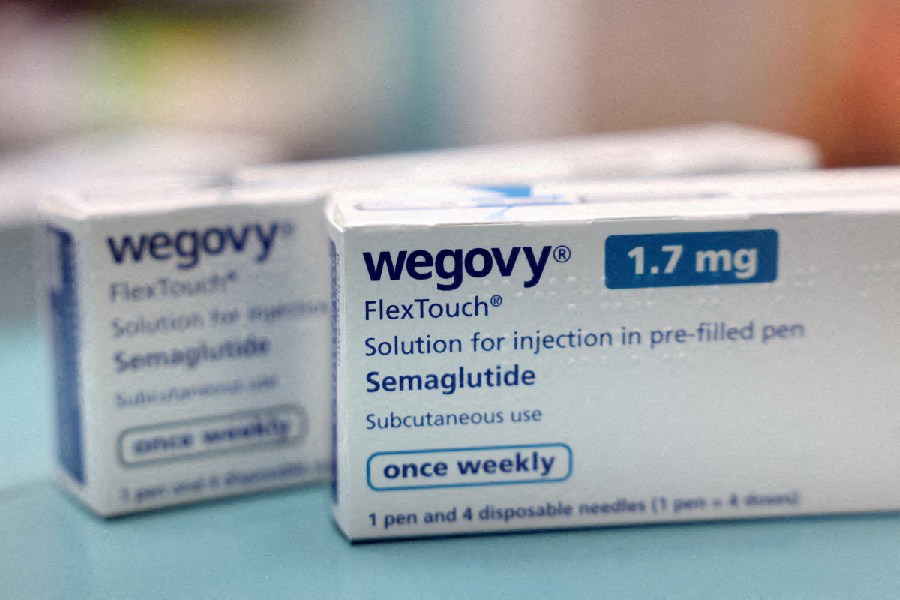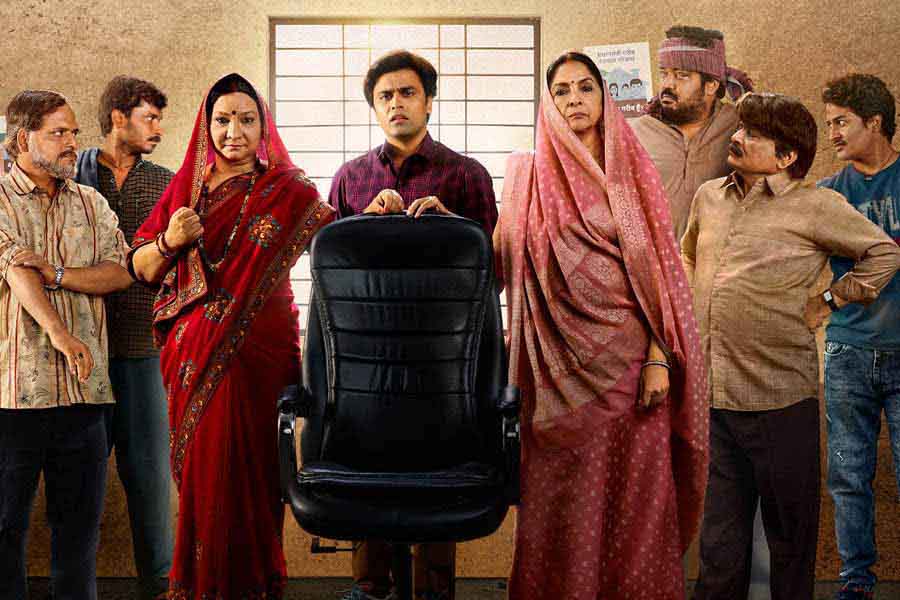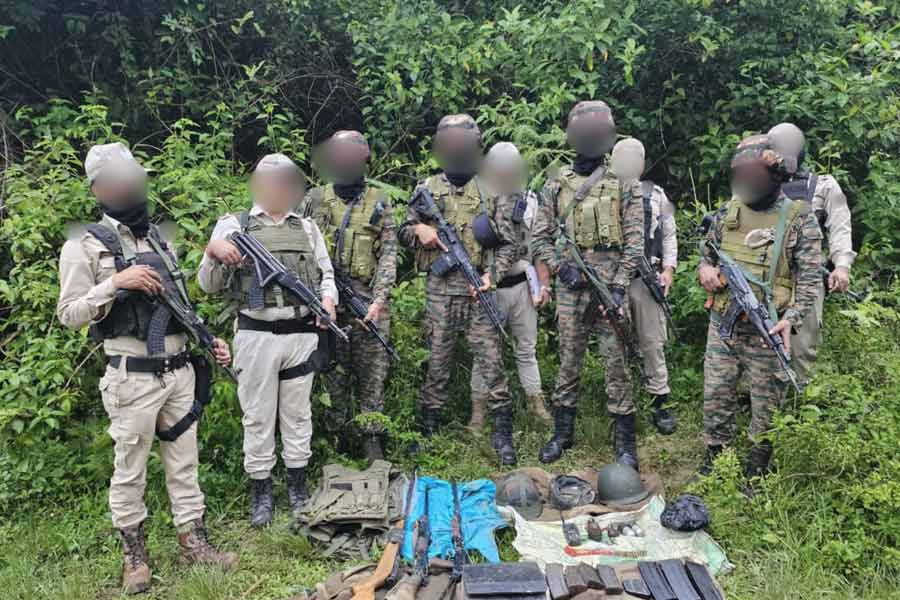 |
| The magnificent model of the Hogwarts School of Wizardry and Magic was handcrafted by a team of 86 artists |
It was, as they said, the stuff of fairy tales. The book was famously written by a struggling single mother who thought of the story of a boy wizard and his friends on a train journey from Manchester to London in 1990. Seven years later the journey was to take another turn.
London, spring 1997: The unpublished manuscript of Harry Potter and the Philosopher’s Stone was lying on the bottom shelf of a producer’s office. It was marked “low priority”. David Heyman, a struggling young British producer had a small office and a staff of two. Heyman had been asked by Warner Brothers to “spot the next big story” and bring it to their attention. Nothing had come up in the last two years and morale was low.
 |
| The glass bottles crowding the shelves of the Potions class are all handmade |
His assistant, Nisha Parti, a 25-year-old Asian woman, took home the manuscript on Friday and started reading it on Saturday morning.
“There was very little buzz about it then, so there were no expectations that it was going to be good,” Parti told The Telegraph. She recalled how the book first reminded her of the Roald Dahl books that she had grown up with, with Harry sleeping under the stairs and his horrible uncle and aunt.
“But then it just developed into this wonderfully imaginative story with just so much richness, detail and character. And I felt like it was a complete original. I couldn’t put it down,” she added.
 |
| Walk by the famous Ollivander’s Wand Shop on Diagon Alley |
On Monday morning, Parti went into the office raving about the book. She convinced Heyman to read it. Soon he too was captivated by the world of wizards and muggles.
The next step was getting Warner Brothers on board. This proved difficult as the book had a very English theme. Also, J.K. Rowling had not been published in the US yet, and there was nothing to suggest that it would become the worldwide phenomenon that it eventually did. It took over a year to convince the studio. Finally, in October 1998, J.K. Rowling signed the rights with Warner Brothers for the first four books in the series. History was soon to be made as the biggest film franchise was to go into production.
Filming began in 2000 in Leavesden Studio outside London on the site of a disused airfield and factory. By now Rowling had become an international bestseller and expectations were high. Over 700 graphic artists, costume designers and technicians headed by set designer Stuart Craig began re-creating the magical world of Harry Potter and his friends.
When they first came to Leavesden, Daniel Radcliffe (Harry Potter) was just 11, Emma Watson (Hermione Grainger) was 10 and Rupert Grint (Ron Weasley) was 12. The sets became their second home for over 10 years. When Warner Brothers finally brought down the curtain on the Harry Potter series in July 2011, they were young adults. Leavesden Studios was filled with over 10,000 props and giant sets. Warner Brothers decided it was time to let in the fans to see the real stuff.
On 31 March 2012, Warner Brothers opened the doors to “The Making of Harry Potter” a studio tour. Tickets sold out immediately till September.
The studio tour plays out the drama adequately. A brief introduction to how the film was optioned sets the scene. Then it is time to sit down in the auditorium to watch a short film, introduced by Radcliffe and his friends. Shots of the films get you into the mood, and finally, the curtain goes up to reveal a real wooden door. The magic of Hogwarts is about to begin.
Few things can be more thrilling than walking with a hundred or so charged up Harry Potter fans into the giant set of The Great Hall and see the tables laid out. The young 18-year-old studio guide, obviously a huge Harry Potter fan, points out to me the finer details that may not have been noticed in the film: the Hogwarts emblem in the fireplace, the fact that the beautiful Owl Podium that stands in front of Professor Dumbledore is covered in real gold and years of melted wax.
As he sorts the screaming fans into their favourite houses, I wander into the second section of the studio, which has all the recognisable rooms from the book and films. The Gryffindor Common Room with its portraits, comfortable sofas and fireplace is lovingly re-created, as is the boy’s dormitory that Harry shared with Ron and his friends. Designed in a circular shape by Craig to create the home that Harry never had as a child, the room has an intimacy and warmth. The beds were made to fit the boys when they were 11 years old. In the later films, they outgrew the beds, and had to always be filmed curled up or sitting on the bed.
 |
 |
 |
| (From top) The dormitory Harry and Ron shared during their stay in Hogwarts still looks cosy and warm; feast your eyes on the three-storey Knight Bus that came to the rescue of stranded witches and wizards when summoned and scan copies of Daily Prophet for headlines from the wizarding world |
Dumbledore’s office with its portraits of former headmasters (all hand-painted oil portraits), shelves of actual leather-bound books, the Memory Cabinet filled with more than 800 tiny handmade and hand-labelled vials, is evidence of how meticulously each set was created.
The rows of glass bottles in the Potions Class were all handmade and filled with actual bones from butcher’s shops, or plastic creatures bought from the London Zoo and then distressed. The family kitchen belonging to the Weasleys, with its self-washing frying fan and self-chopping knife brought out the warmth and slightly chaotic nature of the Weasley home. I press the “Iron The Clothes” button and the iron starts to magically move by itself on the ironing board.
Every prop used in the film — from the Nimbus 2000 and the Golden Snitch to the copies of the Daily Prophet — can be found in the studio. I look into the pink parlour of Dolores Umbridge with its cat plates (each individually painted from real cats) and stand outside Hagrid’s hut with its life-size model of Fang.
Walking into the actual sets of Diagon Alley, past the imperious exterior of the Gringotts Bank and the famous shopfronts of Ollivander’s Wand Shop transports me immediately into the books and the films. The shopfront of Weasleys’ Wizard Wheezes (for which 120 different joke products was created) brings out the painstaking detail with which the sets were planned.
The final treat is the large-scale model of Hogwarts, the core of the book. Built by 86 artists the model was hand-crafted to the finest detail using real plants for landscaping and real gravel for boulders. It was installed with over 2,500 fibre optic lights to stimulate lanterns and torches to give the illusion that students were passing through the hallway. Footage of this model, combined with digital images, brought J.K. Rowling’s vision of Hogwarts School of Wizardry and Magic to the screen on the grandest scale possible.
By the end of the day, I had climbed the footboard of the three-storey Knight Bus, flown on a broomstick, drunk Butterbeer (non-alcoholic), and climbed into the blue Ford Anglia to fly to Hogwarts. A treat for all Potter fans.











